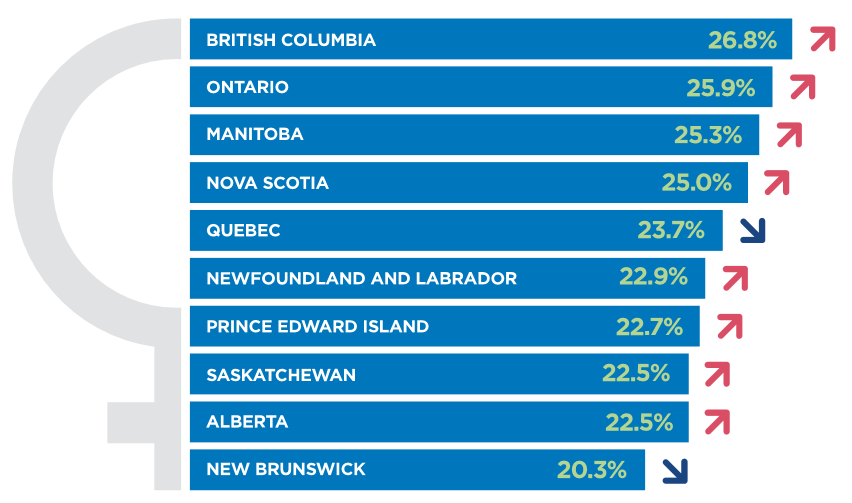This editorial originally appeared in the Toronto Star on July 1st, 2018.
As we celebrate Canada’s 151st birthday, we still have not achieved equal pay or equal representation of women in most sectors.
Every year, Women in Communications and Technology (WCT) publishes a report extracted from Canada’s Labour Force Survey data to answer the question “Where Are the Women in the Canadian Information, Communications and Technology Industry?” Our latest report shows women accounted for only 26.7 per cent of the workforce.
Women are a long way from parity in the Canadian information, communications and technology industries, particularly when you consider the glacial pace of change, writes Joanne Stanley.
That’s a long way from parity, particularly when you consider the glacial pace of change. Since 2011, the percentage has been stuck — hovering from a high of 29.5 per cent to a low of 26.4 per cent. It’s pretty clear that women’s engagement is still waiting for its surge.
Bill C-25, which seeks to improve gender ratios in corporate leadership and governance, and the model of gender equality at the federal cabinet table provide indications of a federal commitment toward true gender equality.
While we can derive satisfaction from gender ratios that moved to near parity in areas such as law, medicine and accounting, some tenacious bastions of exclusion remain. The Canadian technology industry is notable among them.
All this while the industry is facing a talent shortage. Canada will need to fill more than 200,000 technology-related positions by 2021. The growth in these jobs has outpaced the overall economy in the last two years by 4 to 1. Our supply of ICT graduates and workers will be not meet this demand.
Engineering and computer science are the principal disciplines producing talent for the sector. Female enrolment in these disciplines is low and appears to be falling. Women also exit the tech industry at a higher rate than their male colleagues.
The correlation between female engagement and corporate performance and good governance is well documented.
Few industries are as driven by the imperative to innovate as technology.
So, if technology companies know that more women and diverse teams make their businesses smarter and competitive, why are industry leaders content with this intractable ratio?
The problem may be a lack of corporate will.
Fortunately, some have grasped the competitive advantage that more inclusive talent strategies provide in the perennially tight IC T labour market. But to have an impact on the whole industry, more interventionist strategies are called for.
T labour market. But to have an impact on the whole industry, more interventionist strategies are called for.
Working as we do in an industry that loves numbers, our goal with is to ensure the industry is aware and accountable for the percentage of women represented.
This is more than an equity issue — it directly impacts our ability to compete in the sector.
With our hopes for the future focused on artificial intelligence and the Internet of Things, being accountable for the numbers and demonstrating real progress is essential.
The ICT industry talks a lot about the need to close the gender gap. It’s time to stop talking about it and begin to close it.
Written by Joanne Stanley, executive director of Women in Communications and Technology. Learn more about Up the Numbers, and how your organization can get involved.





